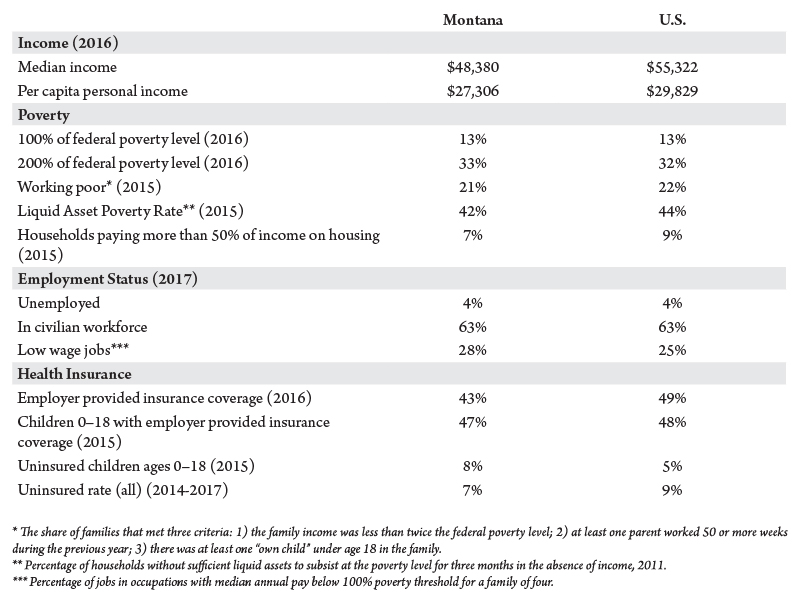Twenty-five years ago, the Family and Medical Leave Act (FMLA) was passed with the lofty goal of helping American families balance the demands of the workplace with family needs. It was underpinned by the belief that preserving the integrity, stability and economic security of families was in the nation’s best interest. But the economic reality and societal structure of the American family has changed since then. In today’s world, the law is no longer adequate.
While the FMLA’s primary aim remains to help families retain their jobs, it fails to ensure their financial security as it grants unpaid leave to a limited number of workers. To support families, businesses and the economy, some form of paid family leave for all is essential either at the federal, state or local levels.
The Case for Paid Leave
Only 12 percent of private sector employees and about 40 percent of the entire U.S. workforce have access to leave under FMLA. As of 2016, FMLA has been used over 100 million times with the average leave duration around 10 days – most commonly for an employee’s own health event.
Under the current law, FMLA allows for unpaid leave for qualified workers for qualified reasons. Once an employee uses up their regular paid vacation leave, sick leave or other paid time off hours, they are left with the option of unpaid leave or going back to work. This option disproportionately affects low-income workers. Forty-six percent of those who needed to take time off did not because they could not afford to go unpaid and many workers in the lowest wage quartiles are unlikely to have access to such benefits.
Data on Montana’s workers and their income is seen in Table 1 and shows that Montana’s numbers are similar to U.S. numbers. One key difference is that Montana’s median and per capita income is lower than the nation’s.

Many Montana measures highlight the tenuous financial security of families; particularly the number of low wage jobs in the state (28 percent) resulting in a high number of working poor (21 percent), the number of households without short-term savings to subsist at the poverty rate for three months (42 percent); and the high number of people without employer-based health insurance (43 percent).
When working Montanans have to take unpaid time off to care for a sick child, to deal with their own health event or to care for an elderly parent, it creates a financial hardship in a time of need. Once all other sources of paid leave are used up and a worker has to take unpaid time off, there is an increased likelihood of family financial instability, especially for low income workers. A loss of one or two months of income could unglue a family’s financial stability. Add a health event with its associated costs and a family could descend quickly into true poverty.
In low-paying Montana service industries, a two-income household earns a combined annual income of $29,922. The likelihood of such a family having paid time off or health insurance is low. If the primary earner suffered a health event requiring time off without pay, the family would be unable to cover basic expenses. Additionally, if the employer was not required to provide leave under FMLA, the employee would have no assurance of retaining their job.
Single working parents are even more vulnerable if they need to take unpaid time off work as their family relies on only one paycheck. Nationally, nearly 20 percent of single mothers work in low wage jobs, defined as jobs paying $10.10 per hour or less. In Montana, 22 percent of single mothers with children ages 3 or younger work in low wage jobs. Thus, taking unpaid leave is rarely an option for these parents, even if they are covered by FMLA.
In addition to families with children, working adults who take on a caregiving role also need paid family leave. Because of demographic shifts, American workers increasingly need to look after aging parents or other relatives. A Gallup Poll in 2010 showed that 1 in 6 Americans working full- or
part-time reported caring for an elderly or disabled family member, relative or friend.
Seventy percent of working caregivers suffered work-related difficulties due to their dual roles, 39 percent left their job to have more time to care for a loved one and 34 percent left because their work did not provide flexible hours. Additionally, 69 percent of workers caring for a family member reported having to rearrange their work schedule, decrease their hours or take unpaid leave in order to meet their caregiving responsibilities.
The Impact on Businesses
Montana’s economy is built on small businesses. Over 90 percent of Montana businesses have fewer than 20 employees, representing 40 percent of employment in the state. Over 20 percent of employees work for firms with 20-49 employees, 25 percent work for firms with 50–249 employees and only 10 percent work for firms with more than 250 employees. Thus, only a small number of Montana companies are required to provide leave under FMLA. However, the impetus to provide paid family leave is growing as research shows that the cost for companies, both large and small, is not as great as feared and the benefits are positive.
In 2015, 23 states introduced legislation on some type of paid family leave. The cost of such legislation is of concern to businesses, especially small business owners. To help understand how paid family leave might impact Montana’s employers, it is useful to look at how paid leave has impacted firms in other states.
Four states – California, New York, New Jersey and Rhode Island – have enacted legislation requiring paid leave for workers. All of these states rely on employee payroll tax contributions or a combination of employee and employer contributions by having paid leave built into their Temporary Disability Insurance programs.
A survey of California employers conducted six years after their law was enacted is summarized in Table 2. It’s interesting to note that firms with fewer than 50 employees showed more positive results than the larger ones. Ninety-one percent of employers in the state were unaware of employees abusing their paid leave policy, a fear that is often mentioned as a reason to not offer the benefit. Additionally, more than 86 percent of employers reported no increased costs to their business from implementing paid leave.

A survey of New Jersey businesses showed that 67 percent experienced no effect on profitability, performance or employee productivity regardless of the number of employees.
These findings potentially allay the fears of Montana’s business community who are ambivalent about the benefits of paid parental leave. The 2015 Montana Paid Family Leave Study asked for an employer’s perspective on paid leave. The results (Table 3) indicate employers have few opinions, perhaps based on a lack of knowledge rather than an outright antipathy.

If legislation is well-crafted, supporting families and growing business is not mutually exclusive. Montana could benefit from some of the lessons learned on state family paid leave laws:
- Lawmakers in states without a Temporary Disability Insurance program, such as Montana, must consider alternative financing structures.
- Eligibility criteria should cover as many workers as possible and address all family needs; families must be broadly defined to include all differences.
- Paid leave must provide sufficient benefits to ensure an employee’s financial security.
- Laws should use existing human capital and infrastructure where possible.
- Outreach and education must be included in the legislation to ensure a workers’ awareness and understanding of the policies and programs.
- Policies and protocols must ensure data collection on utilization.
The Future of Paid Family Leave
All other industrialized countries in the world have paid family leave in place. Out of the 193 countries in the United Nations, only New Guinea, Suriname, a few South Pacific island nations and the United States do not have a national paid parental leave law. Until the federal FMLA includes a paid provision, it will be up to the states to take the lead.
Montana is ripe for paid family leave legislation. Positive research conducted in other states shows the benefits to small businesses and 73 percent of Montanans support some form of paid family leave. Designing a good paid family leave policy can create a win-win for Montana’s employees and employers. As shown above, it’s good for Montana’s businesses, workers, families and the economy.


